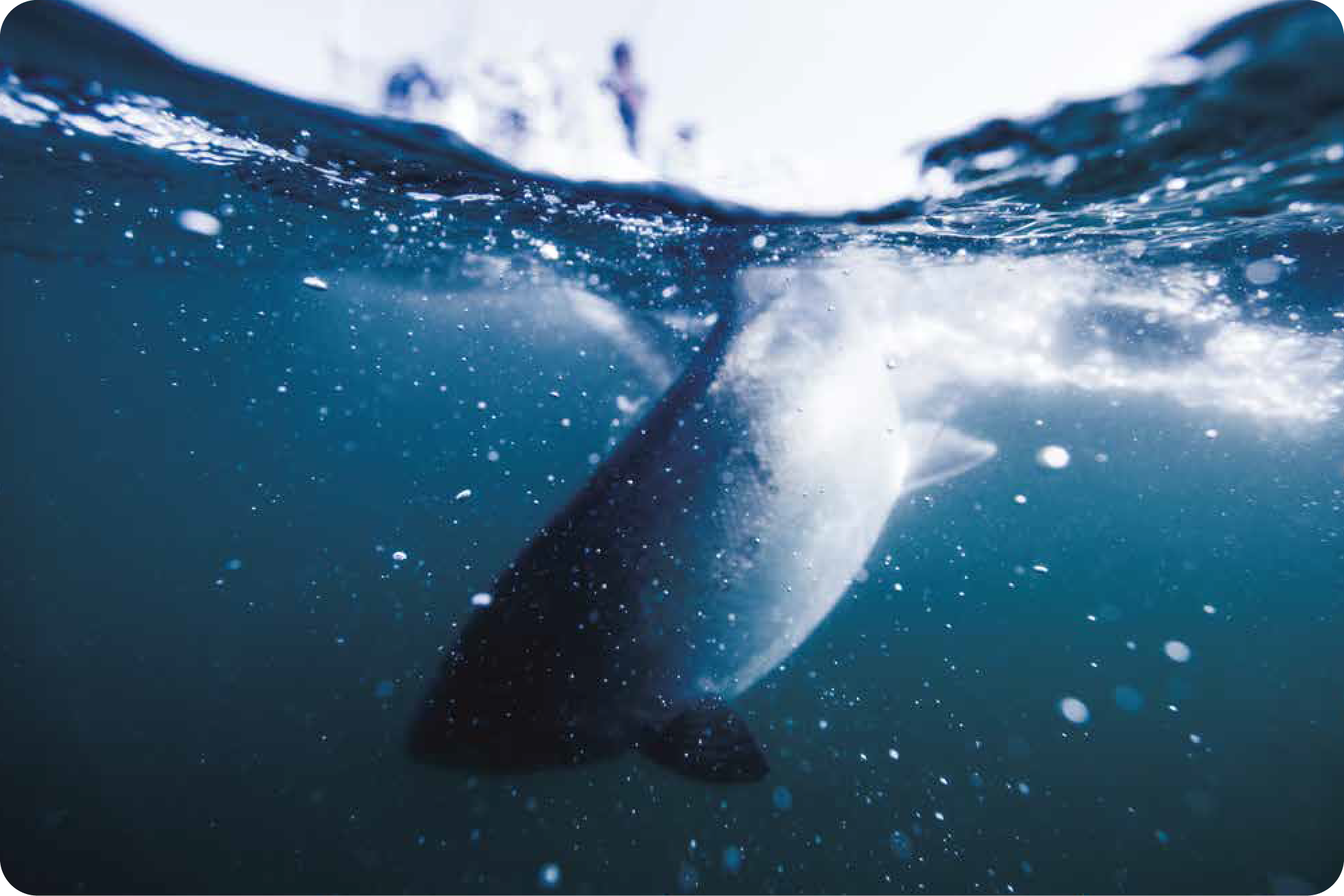
HANDLE AS LITTLE AS POSSIBLE
LAND FISH AS QUICKLY AS POSSIBLE
Prolonged ‘burst swimming’ during landing can lead to cardiac arrest in fish. This becomes even more likely if flashers are used, when water temperatures are warm, and when fish are exposed to air during release. Decreasing “fight time” during landing can reduce the risk and reduces the need for fish to re-oxygenate their organs.
AVOID AIR EXPOSURE DURING LANDING
Exposure to air increases recovery time after release and increases chance of mortality. If it is not possible to avoid air exposure during landing, limit it to less than 10 seconds.
AVOID NETS
Landing nets – even those marketed as ‘fish friendly’ (e.g., rubber-coated or made with nylon netting) are associated with fin splitting and scale loss. If a net must be used (e.g., to measure a fish) ensure the fish remains in the water and the net remains loose to help avoid contact with fins, dermal tissue, and mucous layer (the ‘slime coat’).
HANDLE WITH BARE WET HANDS ONLY
Reduce physical contact with fish as much as possible. When handling fish is necessary, handle only with bare, wet hands (do not wear gloves). Only touch areas like the caudal peduncle and under the pectoral fins where the fish can be evenly supported. Never hold fish vertically by the tail or touch the gills.
RELEASE AT THE WATER LINE
Use a gaff or other purpose-built tools, boat side, to release fish at the waterline. Landing fish with a net and/or handling with your hands can cause injuries leading to delayed mortality.
RELEASE IMMEDIATELY
Release fish immediately, as ‘revival’ efforts (e.g., alongside the boat) increase stress on the fish and can increase post-release mortality, especially when surface waters are warm. Only delay release if fish appear moribund or have lost full equilibrium. Use a submerged recovery bag to protect fish from predators during recovery, which should only take a few minutes.
READ THE RESEARCH
The Sport Fishing Institute of BC is working with researchers from the University of British Columbia to identify, formalize, and promote Best handling practices to help ensure the survivability of released fish including Chinook and Coho salmon. Please read the research reports for full information on these studies and findings.

Developed by the Sport Fishing Institute of BC and University of British Columbia
Supported by the British Columbia Salmon Restoration and Innovation Fund


